Characterization of influenza A viruses with polymorphism in PB2 residues 701 and 702
- PMID: 28900145
- PMCID: PMC5595998
- DOI: 10.1038/s41598-017-11625-y
Characterization of influenza A viruses with polymorphism in PB2 residues 701 and 702
Abstract
The 701 and 702 positions of influenza PB2 polymerase subunit are previously shown to have roles on host range. Limited polymorphisms at these two residues are identified in natural isolates, thereby limiting the study of their role in the polymerase. In this study, we generated 31 viable viruses by random mutagenesis at this region, indicating that these positions can tolerate a wide range of amino acids. These mutants demonstrated varying polymerase activities and viral replication rates in mammalian and avian cells. Notably, some mutants displayed enhanced polymerase activity, yet their replication kinetics were comparable to the wild-type virus. Surface electrostatic charge predication on the PB2 structural model revealed that the viral polymerase activity in mammalian cells generally increases as this region becomes more positively charged. One of the mutants (701A/702E) showed much reduced pathogenicity in mice while others had a pathogenicity similar to the wild-type level. Distinct tissue tropisms of the PB2-701/702 mutants were observed in infected chicken embryos. Overall, this study demonstrates that the PB2-701/702 region has a high degree of sequence plasticity and sequence changes in this region can alter virus phenotypes in vitro and in vivo.
Conflict of interest statement
The authors declare that they have no competing interests.
Figures
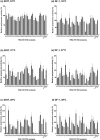
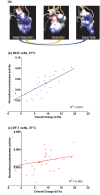
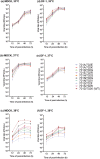
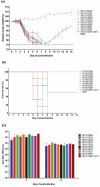
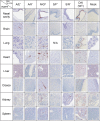
Similar articles
-
Prerequisites for the acquisition of mammalian pathogenicity by influenza A virus with a prototypic avian PB2 gene.Sci Rep. 2017 Aug 31;7(1):10205. doi: 10.1038/s41598-017-09560-z. Sci Rep. 2017. PMID: 28860593 Free PMC article.
-
Influenza A viruses with different amino acid residues at PB2-627 display distinct replication properties in vitro and in vivo: revealing the sequence plasticity of PB2-627 position.Virology. 2014 Nov;468-470:545-555. doi: 10.1016/j.virol.2014.09.008. Epub 2014 Sep 28. Virology. 2014. PMID: 25262472 Free PMC article.
-
Multiple Natural Substitutions in Avian Influenza A Virus PB2 Facilitate Efficient Replication in Human Cells.J Virol. 2016 Jun 10;90(13):5928-5938. doi: 10.1128/JVI.00130-16. Print 2016 Jul 1. J Virol. 2016. PMID: 27076644 Free PMC article.
-
Adaptive mutations in the H5N1 polymerase complex.Virus Res. 2013 Dec 5;178(1):53-62. doi: 10.1016/j.virusres.2013.05.010. Epub 2013 Jun 1. Virus Res. 2013. PMID: 23732876 Review.
-
Host Determinants of Influenza RNA Synthesis.Annu Rev Virol. 2019 Sep 29;6(1):215-233. doi: 10.1146/annurev-virology-092917-043339. Epub 2019 Jul 5. Annu Rev Virol. 2019. PMID: 31283439 Review.
Cited by
-
Comprehensive mapping of adaptation of the avian influenza polymerase protein PB2 to humans.Elife. 2019 Apr 30;8:e45079. doi: 10.7554/eLife.45079. Elife. 2019. PMID: 31038123 Free PMC article.
-
Inhibition of Influenza Virus Polymerase by Interfering with Its Protein-Protein Interactions.ACS Infect Dis. 2021 Jun 11;7(6):1332-1350. doi: 10.1021/acsinfecdis.0c00552. Epub 2020 Oct 12. ACS Infect Dis. 2021. PMID: 33044059 Free PMC article. Review.
-
Structure and Function of Influenza Polymerase.Cold Spring Harb Perspect Med. 2021 Sep 1;11(9):a038372. doi: 10.1101/cshperspect.a038372. Cold Spring Harb Perspect Med. 2021. PMID: 32341065 Free PMC article. Review.
-
Detection and Characterization of an H9N2 Influenza A Virus in the Egyptian Rousette Bat in Limpopo, South Africa.Viruses. 2023 Feb 10;15(2):498. doi: 10.3390/v15020498. Viruses. 2023. PMID: 36851712 Free PMC article.
-
MDCK-B4GalNT2 cells disclose a α2,3-sialic acid requirement for the 2009 pandemic H1N1 A/California/04/2009 and NA aid entry of A/WSN/33.Emerg Microbes Infect. 2019;8(1):1428-1437. doi: 10.1080/22221751.2019.1665971. Emerg Microbes Infect. 2019. PMID: 31560252 Free PMC article.
References
Publication types
MeSH terms
Substances
LinkOut - more resources
Full Text Sources
Other Literature Sources

